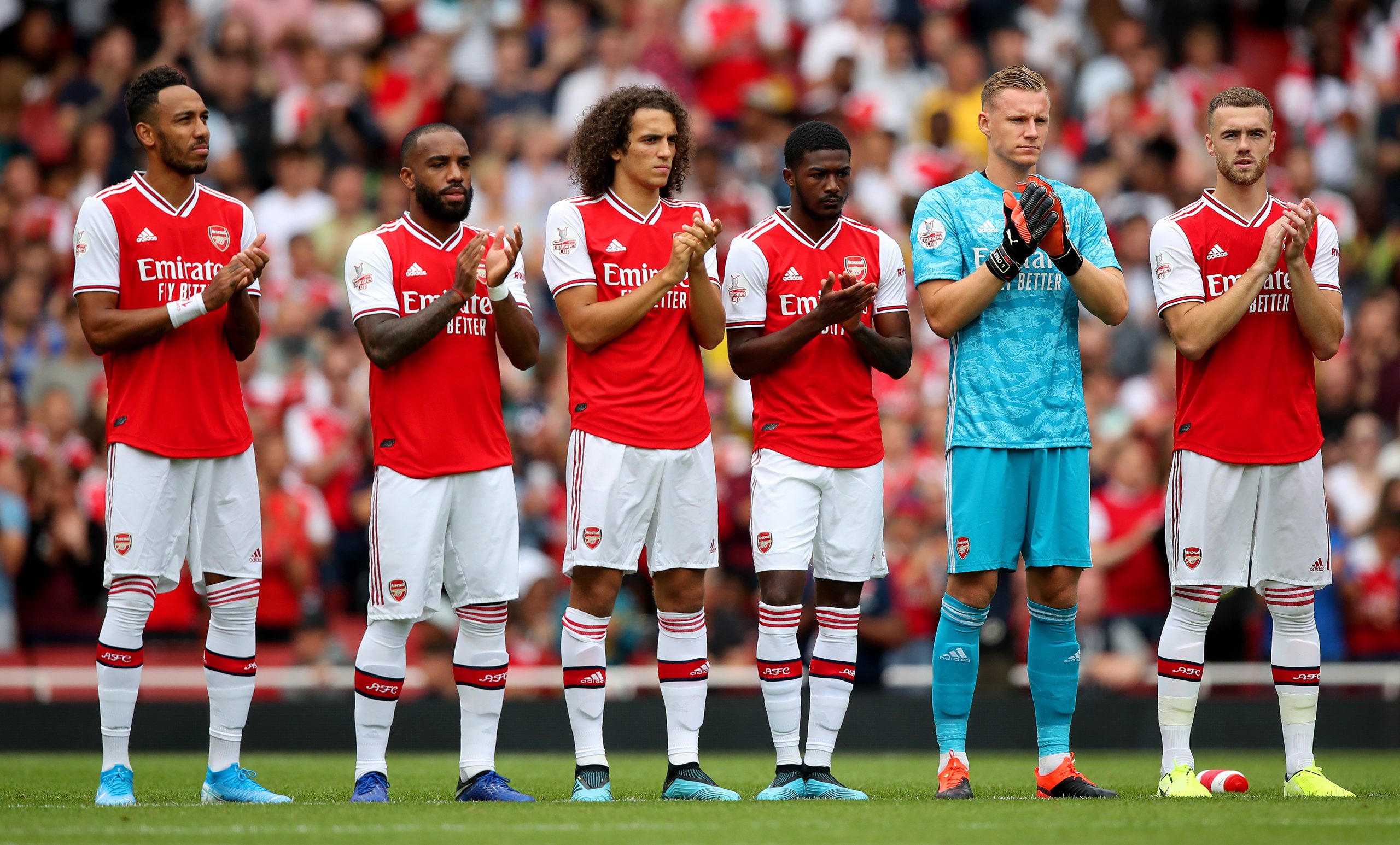The past two seasons Arsenal have gone all in to qualify for the Champions League. The team hoped that continuing to load up on veteran talent would eventually come good and bring forth the extra Champions League revenue needed to be in a better position to retool the squad for the long term. That bet failed in both seasons, and Arsenal entered this summer with a creaky squad needing an infusion of young talents (something that's been said about Arsenal dating back years), yet not necessarily being in an optimal financial state to do so. They delayed the bill for as long as possible, but now that it's come due, it's possible they can't pay.
The 2019-20 season promises to be an intriguing one for Arsenal, both because of the manner in which they went about improving the squad, and just how much their moves could help the worrying metrics that Arsenal had last season.
Metrics
Before getting to the squad remodeling that’s gone on over the summer, it’s important to highlight the level of performance that occurred last season as a reference point. To put it bluntly, Arsenal were not good in 2018–19, and it’s hard to make an argument otherwise. What had been a top four side in terms of shot quantity and quality for the greater part of this decade began to slip in both areas during Arsene Wenger’s last season, and that slide accelerated in season one of Unai Emery’s tenure. Even during the highs of the unbeaten streak that bought Emery some good will, there were the real worrying signs about how sustainable those good times were.
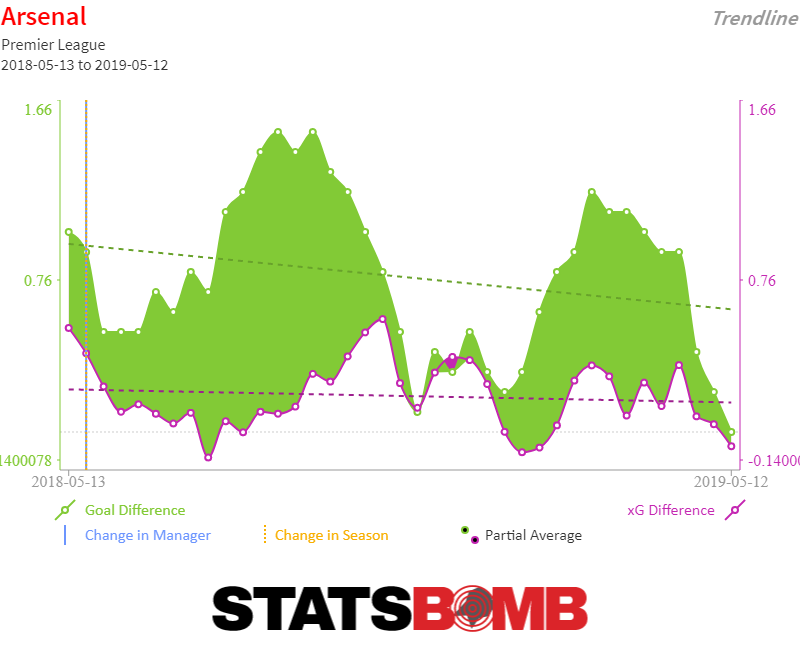
The raw numbers aren’t pretty when accounting for Arsenal’s ambitions to reclaim a top four spot: 10th in shots for and 11th in shots conceded, eighth in expected goal differential and 11th in non-penalty expected goals conceded. The only positive was placing fourth in non-penalty expected goals for, but given how bad the defense was, the end result is an xGD of only 0.09. For reference, Leicester City had a higher xGD at 0.15. Also worrying was how anemic Arsenal were in set pieces, ranking last in set piece xG and ninth in set piece xG conceded. Put it all together and what pops out is the statistical profile of a mid-table side, and were it not for variance going their way (particularly in attack), Arsenal wouldn’t have been nearly as close to finishing in the top four as the sides 70 point tally got them.
What’s also interesting is examining how ball progression and overall passing compared between 2017–18 and 2018–19. For good and for bad, one of the key features of Wengerball was the high level of improvisation in attack which featured a high volume of passes into the final third and eventually the penalty box. In Wenger’s last season Arsenal led the league in passes into the box at five per game. That figure slipped a bit to 4.45 per game under Emery, which still placed second in the league behind Manchester City’s preposterous 6.45 per game. Arsenal increased their percentage of penalty box entries via crosses from 24% in 17–18 to 27%, going from lowest to 5th lowest. Though not uniform, it is generally accepted that as you adopt a more cross heavy approach within the final third, the attack becomes less efficient. For further examining on overall passing tendencies, a great way of displaying how Arsenal passed in different zones is via Statsbomb’s pass sonars, which shows subtle differences that exist between 2017-18 under Wenger and 18-19 under Emery.
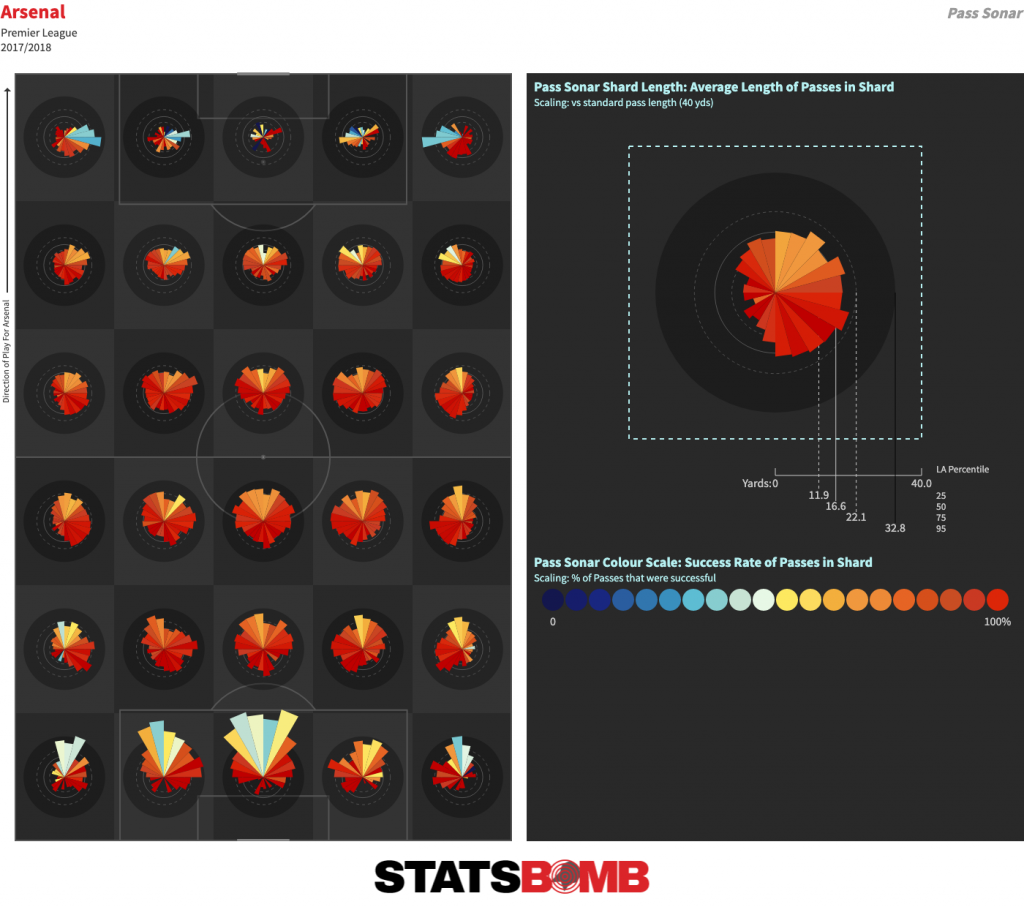
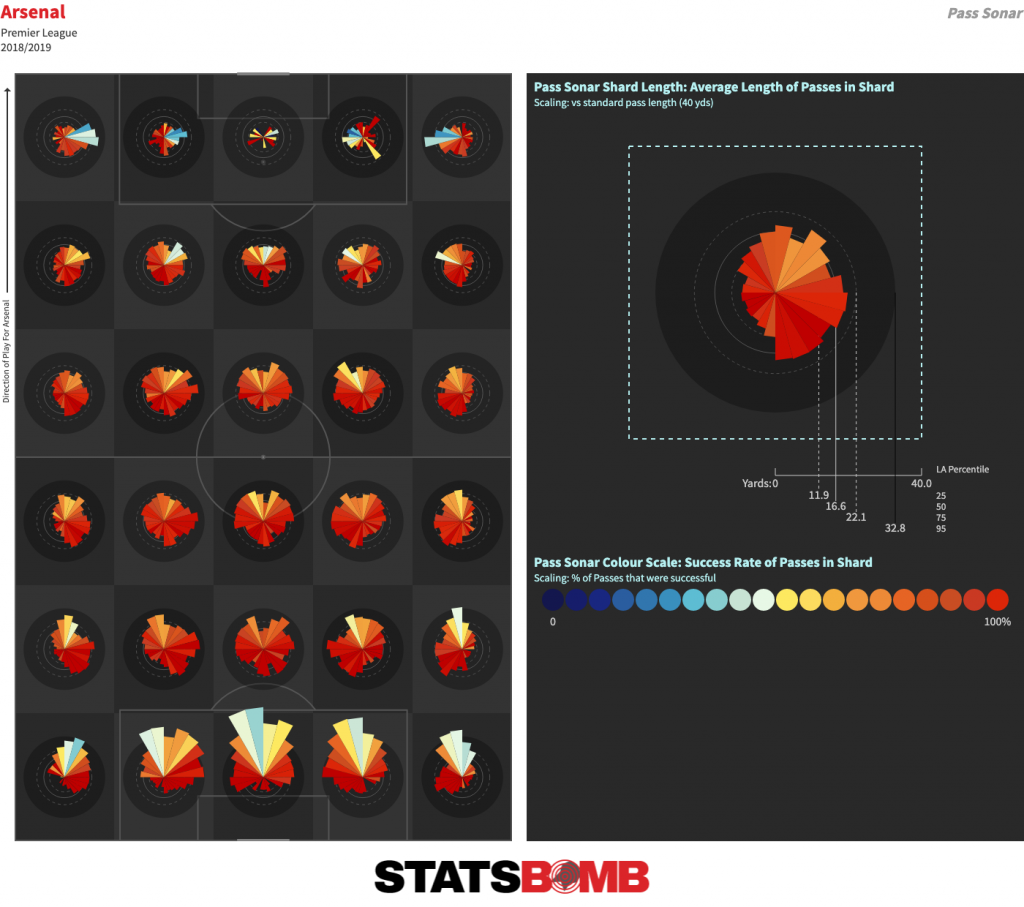
Transfers
The good news for Arsenal is that though the financial situation still seems to be sub-optimal, as currently constituted, there are things to like with their summer business given the resources they're reportedly working with. Arsenal essentially took a punt on Gabriel Martinelli, though it's hard to see how he'll make much of an impact in year one besides being used for squad rotation. In the acquisition of William Saliba, the club has taken a genuine shot at finding a young center-back with potential greatness in the near future. Saliba in particular has the positive indicators needed to have some confidence in projecting future stardom given his sophisticated ball-playing capabilities along with capable defending, not to mention that it’s not everyday that you see a 17–18 year old central defender playing over 1000 minutes for a top five Ligue 1 side. While an argument could be made that Saliba might already be Arsenal’s best CB even at his young age, it’s probably for the best that he gets another season in France where he gets to make mistakes and hopefully grow further as a prospect.
Acquiring Dani Ceballos was also a good move for the club, albeit only as a loan without an option to buy. It’s a smart signing for multiple reasons: it’s never a bad idea to poach young talents at super clubs who have some track record of production and are in need of game time, acquiring someone like Ceballos gives Arsenal options in the midfield, and it allows the other young midfielders in Matteo Guendouzi and Lucas Torreira to not be burned out towards the end of the season. Though his game time at Real Madrid has been limited over the past two seasons, Ceballos has been super promising as a ball progressing midfielder who is a magnet for drawing fouls. It’s been awhile since Arsenal had a midfielder who could combine functional athleticism along with high level passing; the days of Santi Cazorla roaming the midfielder in an Arsenal shirt are fast becoming a distant memory.
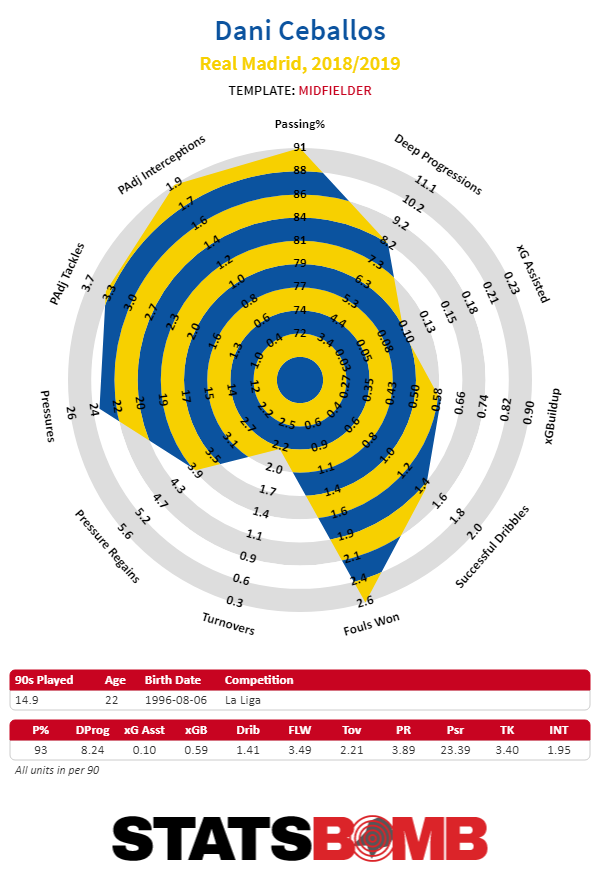
But the real headliner of Arsenal’s summer business is the reported acquisition of Nicolas Pepe at a staggering fee of £72 million, far outpacing the previous record of £56 million spent on Pierre-Emerick Aubameyang. There are multiple ways to look at the Pepe acquisition. Even after accounting for 9 of his goals coming via penalties, it’s undeniable that Pepe had a solid season and it’s not everyday that you find wide attackers in their age 23 season who have a non-penalty scoring contribution per 90 rate of 0.61 in a big 5 league. His style of play last season scales fairly well towards playing for bigger clubs given his coordination on-ball as a chance creator and dribbler, the ability to operate within the halfspace through cleanly receiving the ball to turn, and awareness to exploit holes in the back line either with passes into the box or off-ball movements.
https://twitter.com/StatsBomb/status/1155053927970299904
Where the issues lie is that Arsenal paid a premium for Pepe’s services. Targeting an athletic wide player isn't the issue, given Arsenal's real decline in collective athleticism over the years, but the price point that it took to help address it is extreme. In an ideal world, given Pepe's production along with the concerns that this is his first season of good production, you would hope to pay around £45 million and perhaps up to £55 million at the high end for someone who had a good but not necessarily great season in Ligue 1. It is beating a dead horse when saying this, but Arsenal are paying the price that they could’ve avoided years ago with better squad planning. By getting these type of talents at an earlier stage in their development, you avoid having to pay these sky high prices, and it becomes even more of a masterstroke if you’re able to get these attacking talents for dirt cheap via transfer or through the academy. One way to help mitigate that worry a little bit is if the young kids continue to impress during the season as they have in preseason, and they start to slowly build up value as assets.
Having said all that, and while the reported £72 million represents a gargantuan fee, there does remain the chance of some upside existing with this acquisition. If Pepe truly hits and becomes one of the top players in the league, that would be of great benefit to Arsenal both in the short and long term. At 24, he is just young enough that you can do the balancing act of getting ~3 years of awesome production and perhaps selling him for very good money down the line, in the scenario where he hits his apex as a player. So long as Pepe continues to hit at around 0.6 non-penalty scoring contribution rate during his time as an Arsenal player, the move won't go down as a unmitigated disaster.
Overall it would be fair to classify Arsenal’s business as fairly promising, and perhaps even good given the doomsday scenario that fans feared heading into this summer, though there's still some potential downside since the holes at leftback and central defense remain unfilled. Locking in a future transfer for a potential stud at center back was smart, and could look like a stroke of genius if Saliba eventually turns into a world beater. Finding a short term option in midfield via a highly promising midfielder (with the faintest of hopes of concocting a future permanent agreement in the following summer if things go well) was also rather shrewd. The Pepe deal represents a big gamble that could swing either way, and though addressing that position was smart, it does make one wonder how exactly Arsenal will use him, Alexandre Lacazette, and Aubameyang throughout the season.
2019–20 Outlook
It’s not impossible to make an argument in favor of Arsenal finishing in the top 4, though that line of thinking is not necessarily one centered on their 18–19 performance, but rather educated guessing surrounding competition around them. Chelsea are being led by a manager in Frank Lampard who has had only one season of managerial experience at Derby, and that Derby side relied on a whole lot of variance in both defense and attack to finish in sixth place. While he’ll have a much better squad to work with, he’s also facing a Premier League that is stacked with talented managers throughout. Add to it the departure of Eden Hazard and two of Chelsea's young stars in Ruben Loftus Cheek and Callum Hudson Odoi recovering from devastating Achilles injuries, and the recipe exists for Chelsea to experience a turmoil heavy season that sees them far away from the top four.
As for Manchester United, the evidence of Ole Gunner Solskjaer being the type of manager that you would want to have if you’re aspiring to be in the Champions League is at best inconclusive. Though United were better last season with him as manager than Mourinho during their respective half season stints, Solskjaer's didn't necessarily instill the level of confidence needed from someone who eventually became the long-term manager. The squad as well has not seen the type of remodeling that would instill confidence. They took a major bet on Aaron Wan-Bissaka, the rumors surrounding departures for Paul Pogba and Romelu Lukaku have not gone away, and potentially spending £80 million on Harry Maguire would be another example of United's inability to operate in the transfer window with any semblance of rationality. Like Chelsea, the downside risk is real for a tumultuous 2019-20 campaign to occur.
And then we come to the Premier League clubs who reside below the big six, the likes of West Ham, Wolves, Everton and Leicester. Of all the seasons in which England has had a defined big six, 2019-20 has the greatest potential for one or two of those members to slip out and create chaos in the league table. That's an exciting prospect, though it's fair to wonder just how equipped these clubs exactly are to taking advantage of such an opportunity. Everton's reported acquisition of Moise Kean is a big plus to their summer business, though selling Ademola Lookman could look bad if he becomes a star with RB Leipzig given how having multiple young talents simultaneously making the leap is extremely helpful in bridging the gap towards a run at a top spot. Wolves have European football to deal with, West Ham have done well to add genuine attacking talent but still the concerns remain in midfield and defense, and Leicester could very well have missed the boat by overpaying on Youri Tielemans and Ayoze Perez. As fashionable as it's been this summer to make proclamations about this being the season of changes occurring at the top, someone from this group of four has gotta actually be good enough to make that happen.
Add everything up, and the road map exists for Arsenal to make it into the top 4, even if that last spot amounts to a rock fight that rewards whoever screws up the least (especially if it ends up being between Arsenal, United and Chelsea). Where the positive vibes end is if Arsenal once again have another season where their shot quality and quantity resemble a mid-table side, because even with the high end talent that Arsenal have, expecting them to have such positive variance between expected and actual goal difference doesn’t amount to a sustainable strategy (another factor: whether Bernd Leno could once again have a noteworthy shot stopping season despite his dubious track record in the Bundesliga). Having another disappointing season that ends without qualification for the Champions League could very well make Unai Emery's position untenable, and once again add further strain to Arsenal's finances.
It's clear what the stakes are for Arsenal in 2019-20, as anything short of getting into the Champions League would represent another disappointing season. Whether this Arsenal squad will attain their goal is anyone's guess. Header image courtesy of the Press Association
